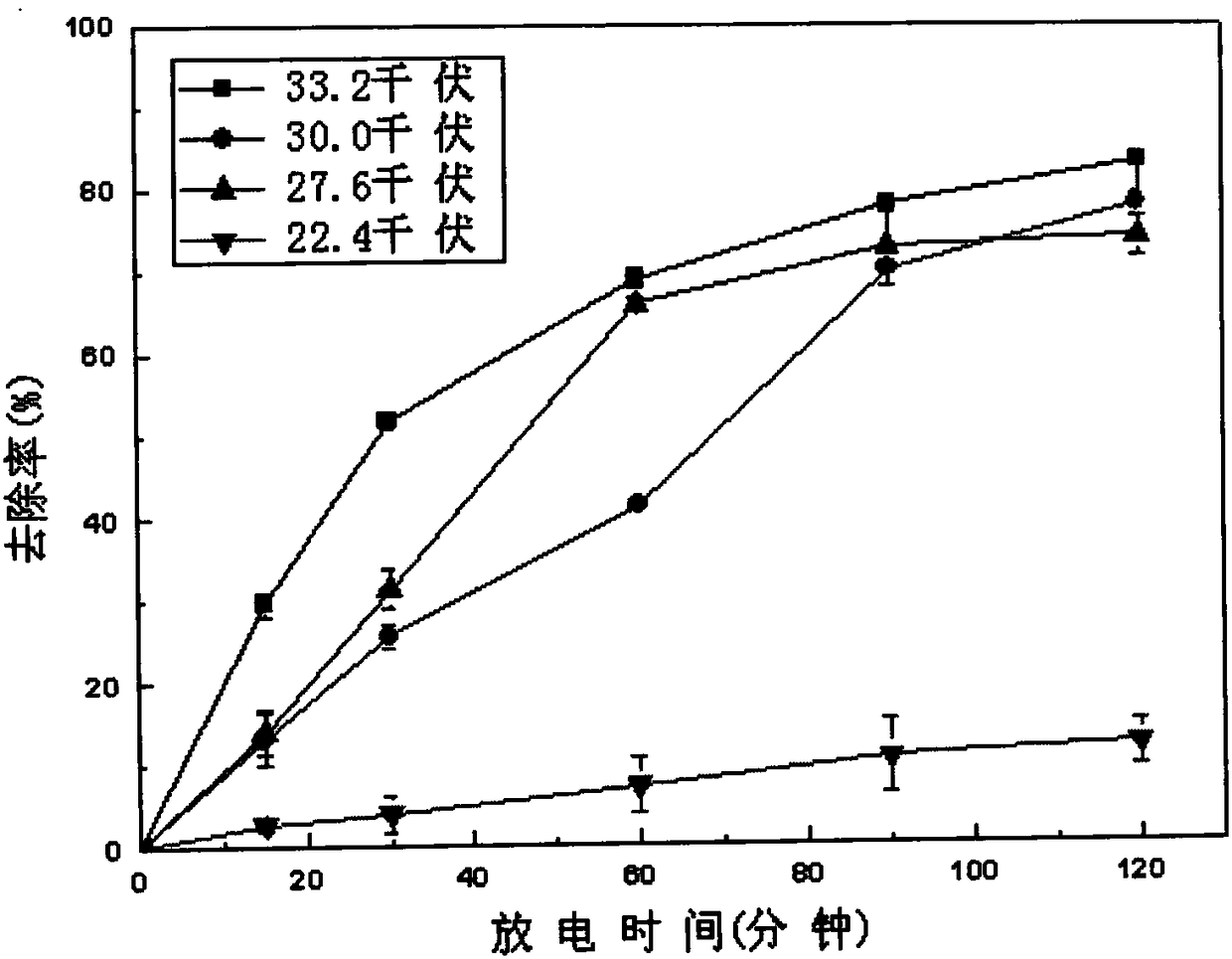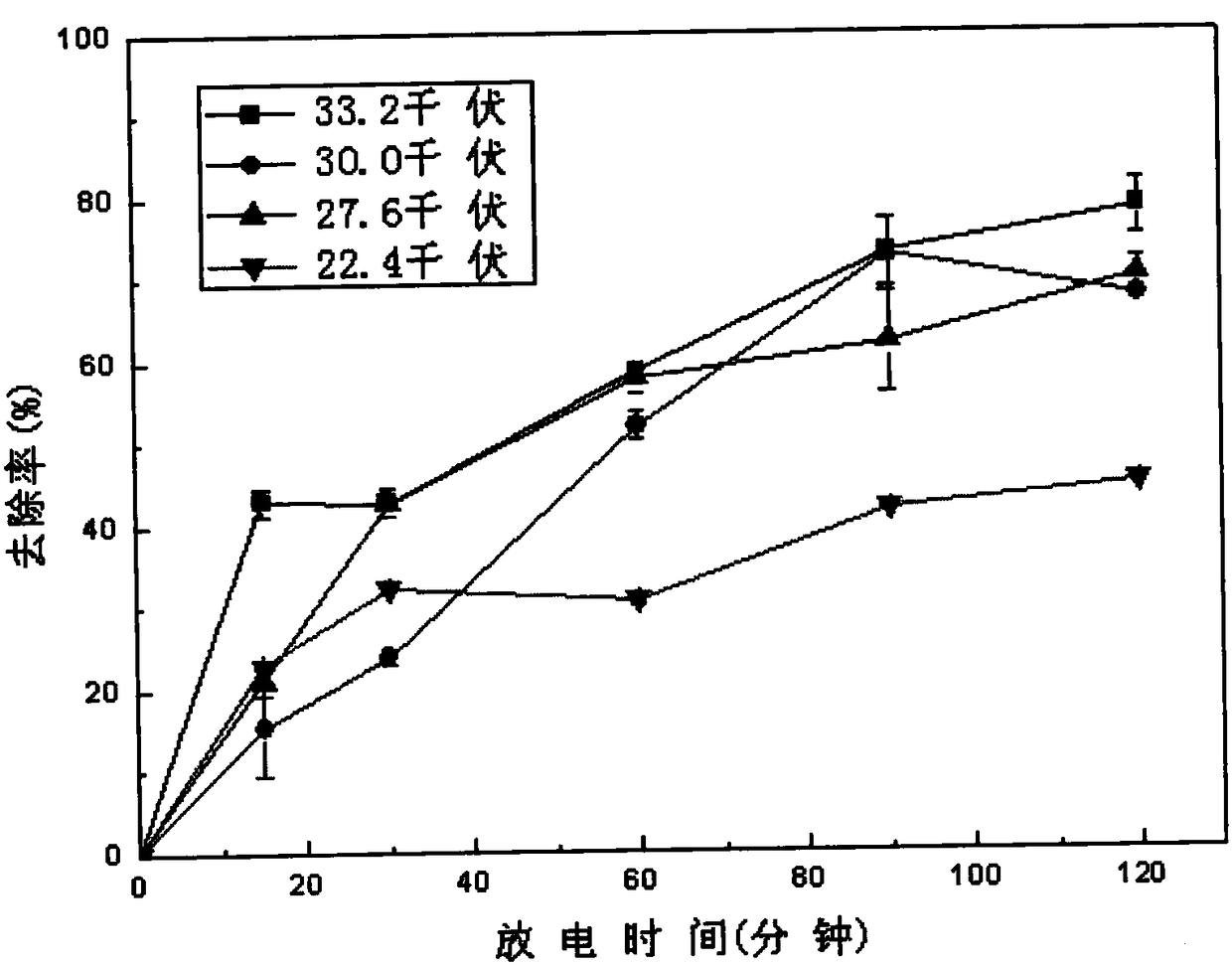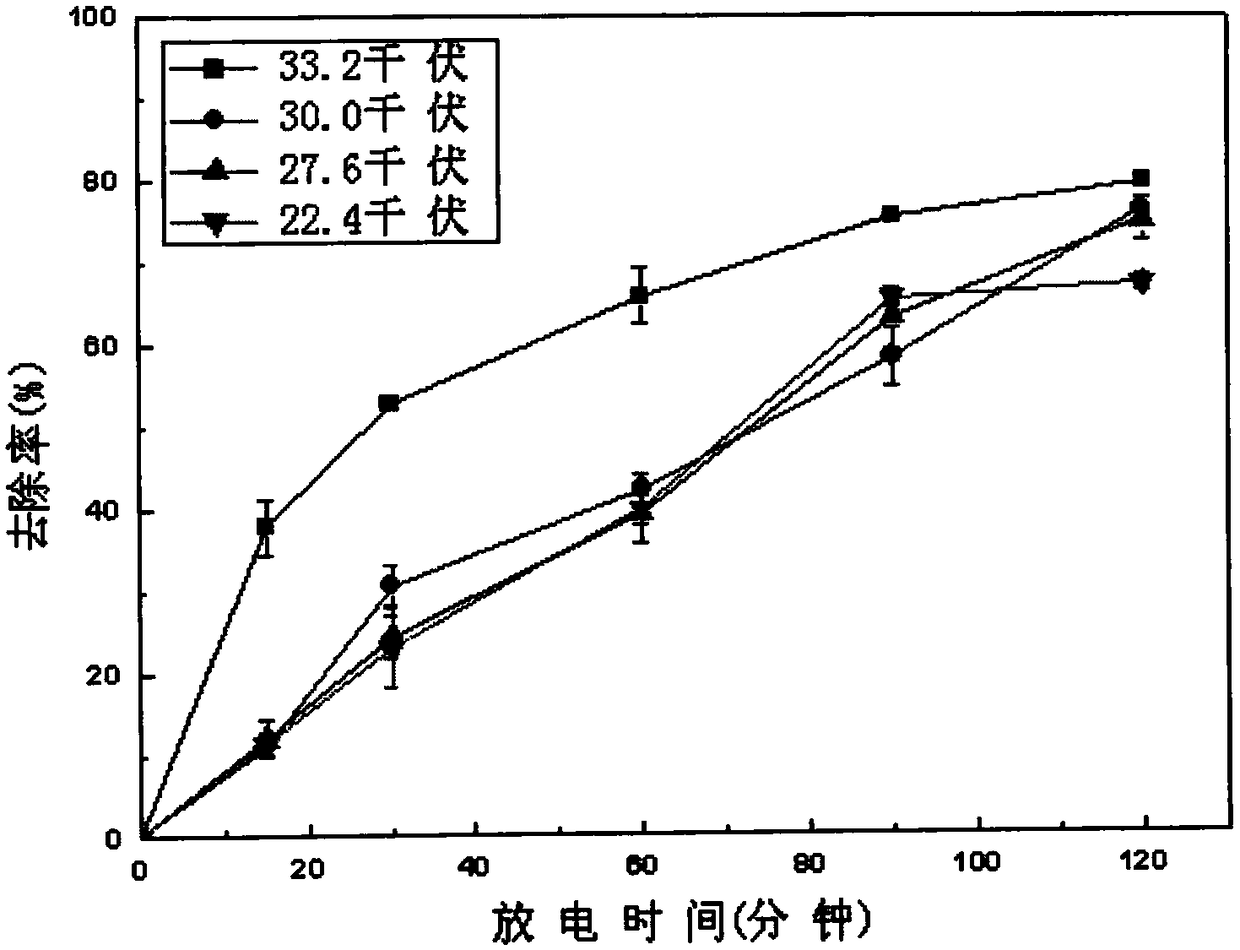Method for removing glucocorticoid in water
A glucocorticoid and water removal technology, applied in chemical instruments and methods, water pollutants, water/sewage treatment, etc., can solve the problem of inability to completely remove glucocorticoids, lack of effective glucocorticoid removal, and increase Risks and other issues, to achieve the effect of great industrial application prospects, good removal effect, simple and easy reaction device and operation
- Summary
- Abstract
- Description
- Claims
- Application Information
AI Technical Summary
Problems solved by technology
Method used
Image
Examples
Embodiment 1
[0028] A method for removing glucocorticoids from water:
[0029] Firstly, the glucocorticoid solutions containing fluocinolone, triamcinolone acetonide and clobetasol propionate with concentrations of 50mg / L were prepared, the initial pH was 6.8, and the discharge voltage was adjusted to 22.4kV, 27.6kV, 30.0kV and 33.2kV, Reaction 15 to 120 minutes, the removal rates of three target glucocorticoids under different discharge voltages in different time are as follows: Figure 1-3 As shown, the removal rate of target pollutants increases with the increase of discharge voltage and the prolongation of discharge time. The discharge voltage is 27.6kV, after 120 minutes of reaction. The removal rates of the three target pollutants all reached more than 70%.
Embodiment 2
[0031] A method for removing glucocorticoids from water:
[0032] On the basis of embodiment 1, select discharge voltage to be 27.6kV, adjust initial solution pH to be 3.3, 4.6, 6.8 and 8.0 respectively, the removal rate of three kinds of target glucocorticoids after reaction 120 minutes is as follows Figure 4-6 As shown, the removal rate of clobetasol propionate has little change with pH, the removal rate of fluocinolone is the highest under neutral conditions, and there is a certain inhibitory effect under acidic conditions, and the inhibitory effect increases with the increase of acidic conditions, alkali It has obvious inhibitory effect, but finally can reach 65% removal rate. Triamcinolone acetonide and fluocinolone are similar, and the removal rate is higher under neutral conditions. The stronger the acidity, the stronger the inhibitory effect. The difference is that the alkali Triamcinolone acetonide has a relatively high removal rate under aggressive conditions.
Embodiment 3
[0034] A method for removing glucocorticoids from water:
[0035]On the basis of embodiment 1, select discharge voltage to be 27.6kV, adopt respectively deionized water, ground water, tap water, surface water and secondary settling tank effluent to prepare the solution containing three kinds of target glucocorticoids, react five kinds after 120 minutes The removal rates of the three target glucocorticoids in different water matrices are as follows: Figure 7-9 shown. Under different water matrix conditions, the removal rate of the three target glucocorticoids can reach more than 67% after 120 minutes of reaction, and the surface water is more conducive to the removal of triamcinolone acetonide and clobetasol propionate. The method is applicable to the removal of glucocorticoids in different water bodies.
PUM
 Login to View More
Login to View More Abstract
Description
Claims
Application Information
 Login to View More
Login to View More - R&D
- Intellectual Property
- Life Sciences
- Materials
- Tech Scout
- Unparalleled Data Quality
- Higher Quality Content
- 60% Fewer Hallucinations
Browse by: Latest US Patents, China's latest patents, Technical Efficacy Thesaurus, Application Domain, Technology Topic, Popular Technical Reports.
© 2025 PatSnap. All rights reserved.Legal|Privacy policy|Modern Slavery Act Transparency Statement|Sitemap|About US| Contact US: help@patsnap.com



